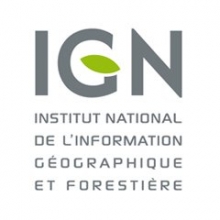European Workshop on Urban Climate Indicators, EWUCI 2021
The European Workshop on Urban Climate Indicators tackles the design of relevant and computable urban climate indicators to study and adapt to climate change, specifically indicators that can be scaled in space and in time throughout Europe thanks to a better access to and better sharing of data.
Context and objectives
The Intergovernmental Panel on Climate Change calls for Climate Services to transfer more actively to all stakeholders climate change information that is scientifically robust and relevant to their specific context. Designing these services requires collaboration between scientists from different background and practitioners, between public and private sector. We are challenged to advance the field of urban climate indicator and to make the most of opportunities that exist at the scale of Europe, like information infrastructures (Copernicus, INSPIRE), the European directive on Open Data and the ambition of Europe to become the first neutral continent.
In this context, the European Workshop on Urban Climate Indicators tackles the design of relevant and computable urban climate indicators to study and adapt to climate change, specifically indicators that can be scaled in space and in time throughout Europe thanks to a better access to and better sharing of data. It is organised with the support of EuroSDR, of the national mapping agencies, statistical institutes and meteorological institutes of France and of Finland (IGN, INSEE, MétéoFrance, Statistics Finland, FMI, NLS), of the finnish environment institute (SYKE) and of the european project ERA4CS URCLIM on urban climate services.
Target audience
Targeted audience is scientists and experts who specify, prototype or produce indicators relevant to urban climate study, scientists and experts who advance the field of information infrastructure to support this application.
Venue: The workshop will be fully virtual due to the current sanitary situation, using zoom.
Duration: 1 full day, May 17th, 2021
Register to the event: https://www.eventbrite.com/e/ewuci-2021-tickets-148888376141
Program May 17th, 2021 (09:00 to 17:00)
9:00 | Welcome adress |
What data to manage summer comfort in urban planing projects in France? Julia Hidalgo, LISST (Interdisciplinary Laboratory on Society Solidarity and Territory) | |
Designing solutions for municipalities specific needs related to adapting to UHI Christophe Bortolaso, Berger-Levrault | |
10:15 | Break |
10:45 | Co-construction of Climate Services based on a meteorological stations monitoring network in Toulouse agglomeration Guillaume Dumas, CNRM, Toulouse Métropole |
Using Satellite Data for Urban Environmental Measures Maren Koehlmann, Institute for Research and Development in Federal Statistics | |
New air quality measurement service for cities Tarek Habib , Murmuration, https://murmuration-sas.com/en/homepage Continuous monitoring of Greenhouse Gases (GHGs) is of vital importance as it is key to measure our progress towards the achievement of the sustainability of our environment. The same applies to global atmospheric simulation of GHGs variations and fluxes that enables us to understand and build the future climatic scenarios. Both tasks are complex requiring high computational costs, human validation work and a large number of geographically distributed measurement instruments. The space agencies ESA and NASA have developed in the last decade satellites capable of measuring air quality, through the observation of GHGs, with increased accuracy. Satellites are capable of measuring the concentration of GHGs in the troposphere. We propose to present our findings in computing the correlation between ground-based data using the ICOS infrastructure data with OCO2 and S5P satellite data to validate the use of satellites to improve our global observation capacity and the global simulation models of GHGs. On the other hand, we will present the possibility of creating a monitoring service for cities, scalable on a global scale and its economic model. | |
12:15 - 14:00 | Lunch break |
14:00 | Urban climate and adaptation : from local to European scales, back and forth Alban Mallet, Ecological transition department, Greater Nantes Metropolitan Area This presentation tackles encountered challenges from the perspective of an operational practioner to adapt a city to climate change. At the local scale, the transfer of knowledge from scientific requires more interoperability and common referentials. At a higher scale, territories gather to compile and consolidate observations and knowledge in so-called regional IPCC. At a european scale, collaboration betwen cities, in Eurocities, also is important to participate to the european regulation process. |
Contribution on assessing methodological approaches for SDG indicator analysis Gwendolin Seidner-Schötz, Patrick Knoefel, and Jeanette Kretz BKG, German federal agency for cartography and geodesy | |
Overview on selected challenges through the lens of ERA4CS URCLIM project and other projects Athanasios Votsis, Adriaan Perrels, Valéry Masson University of Twente, Finnish Meteorological Institute, Météo France
| |
Round table animated by Adriaan Perrels, Finnish Meteorological Institute | |
16:30 | End of the workshop |





